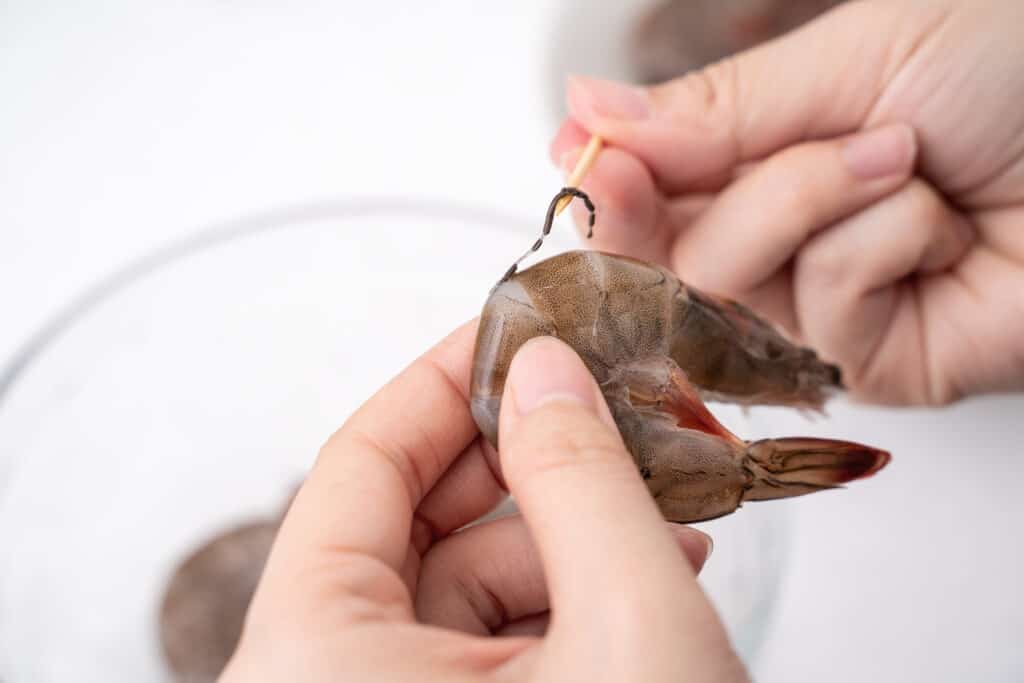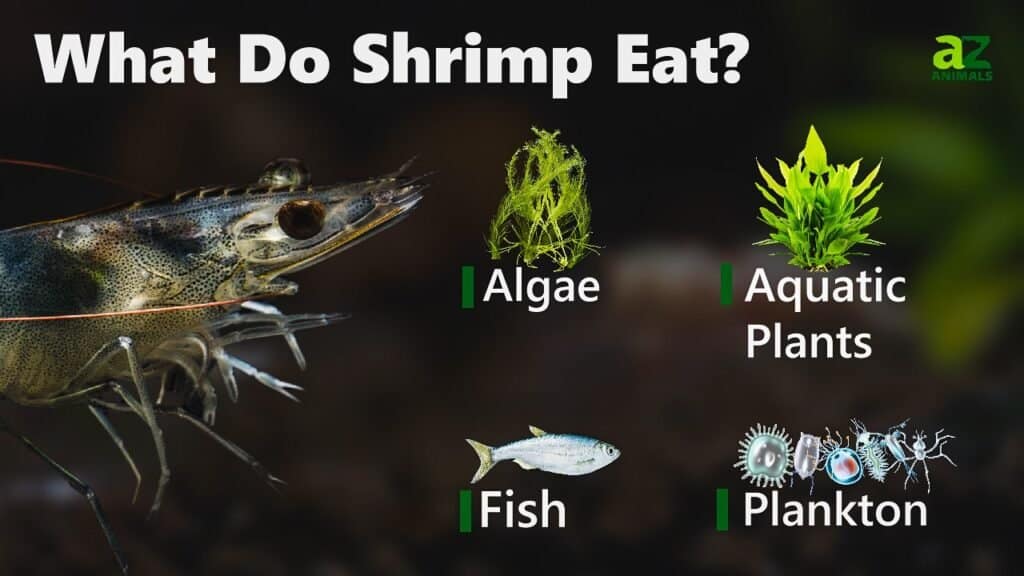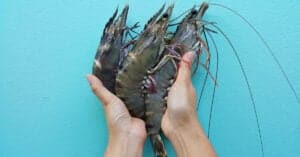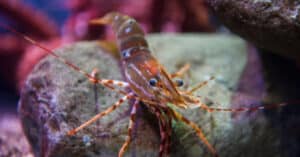Shrimps are among the most popular crustaceans in the sea. They are also a vital inclusion in many of man’s luxurious dishes. Like every other small and big animal, shrimps have digestive tracts containing poop.
Interestingly, there are different misconceptions about shrimp poop. Many shrimp lovers do not even know the first thing about shrimp poop. In this article, you’ll discover everything you’ve ever wanted to know about shrimp poop.
How Do You Identify Shrimp Poop?

Shrimp poop is often removed from the crustacean in a process called deveining.
©Romix Image/Shutterstock.com
Shrimps are small crustaceans with tiny internal organs, which is probably why many do not know what this animal’s poop looks like. And that includes its shape and color.
However, identifying shrimp poop is relatively easy. There are black lines in shrimps commonly referred to as the veins. The simple truth is that these lines are, in fact, not veins but digestive tracts containing shrimp poop.
Shrimp poop is often removed from the crustacean in a process called deveining. This deveining happens because many believe consuming the veins is harmful or dirty. However, it is funny to note that shrimp veins are not removed in this process.
The shrimp’s blood vessel consisting of arteries lies on the inside of the shrimp and is a white line, not black. The line is white because shrimps have clear blood and are not red like most animals. So, the process of deveining does not remove the veins, but it eliminates the poop.
What other interesting facts about shrimp poop are noteworthy? Does the unintentional consumption of shrimp poop expose one to any danger? Let’s discuss more exciting points you should know about shrimp poop.
Is Consuming Shrimp Poop Harmful?

Consuming poop with shrimp affects taste.
©DavidTing/Shutterstock.com
It is a normal procedure to remove poop from various animals before consumption. There are diverse reasons for this removal, depending on the animal. One of the most common reasons is the threat to consumers’ health. Excreta from many animals like cows, birds, and rats are usually harmful when ingested. However, the consumption of shrimp poop does not pose a significant health risk to the consumer.
Shrimp poop does contain bacteria, but the heat from cooking is always enough to neutralize the effect of the bacteria. However, poorly cooked shrimps might contain harmful substances that have adverse effects.
There are many side effects of poorly cooked seafood. Hence, heating becomes important. The action of heat makes eating cooked shrimp safe health-wise.
While shrimp poop does not pose significant health problems, they pose a major taste problem. What does this mean? Shrimps have an excellent yet unique taste that makes them a popular dish. However, consuming poop with shrimp affects this taste. It gives the shrimp a stony taste while eating.
This bad taste is the primary reason it is vital to remove the poop from the shrimp. It is less enjoyable to consume poop with shrimp, but this cannot be said about bird poop or rat poop. None of those are safe for consumption!
Having said that, it is essential to know how to remove the digestive tract containing the poop from the shrimp before consumption. What does this process entail? Let’s see.
How to Remove Shrimp Poop?
Removing shrimp poop is a simple process that requires simple kitchen tools. All you need are steady hands and a sharp knife. The digestive tract (often called the black veins) is clear to see on the back line of the shrimp. It is a straight black line. One can cut through the back with a sharp knife and remove this black line.
Removing the black line automatically removes the digestive tract and, by extension, the poop. The good news about the removal process is that it can be before or after cooking the shrimp. However, the bad news is that removing the tract after cooking is not always easy.
Cooking the shrimp makes every part of it soft and easily breakable. Cutting the back in this state makes it easy for the digestive tract to break into pieces. This breakage makes it challenging to remove the poop. Hence, removing the black line before cooking the shrimp is better. This process ensures that the consumer enjoys the unique taste of shrimp.
The shrimp’s diet is the primary factor that contributes to its unique taste. This diet also determines the content of the shrimp poop. What constitutes the meal of these remarkable crustaceans? Let’s see the answer to that question.
What Do Shrimps Eat?

The shrimp’s diet is another fact that sets the animal apart. Shrimps are opportunistic omnivores, meaning they eat anything they can find in the sea. Their diet includes microscopic plants and animals.
They eat anything they can find around them, including hair algae, which most other water creatures don’t eat.
There are different species of shrimps; however, most are nocturnal. It means they hunt during the night. Shrimps also help other animals, especially fishes suck off parasites from their mouth. This contribution to fish health shows how much of an eater the shrimp has become in the sea.
Can Shrimps Make Good Pets?
The shrimp’s wide range of diets makes it a popular pet among many aquarium lovers. Although the idea of keeping shrimps is still new, these crustaceans are excellent pets as they offer pet owners a lot of advantages.
Shrimps help to remove one major problem in aquariums – they eat off algae from the aquarium. Algae are a significant source of discoloration when keeping aquatic animals as pets. However, the inclusion of shrimps helps to remove that problem.
Another reason shrimps are excellent pets is due to their varying colors. Different species of shrimps have different colors, and keeping them as pets makes the setting alive and colorful. One colorful example is the cherry shrimp. Shrimps are excellent both as food and as pets.
The photo featured at the top of this post is © Kovaleva_Ka/Shutterstock.com
Thank you for reading! Have some feedback for us? Contact the AZ Animals editorial team.






